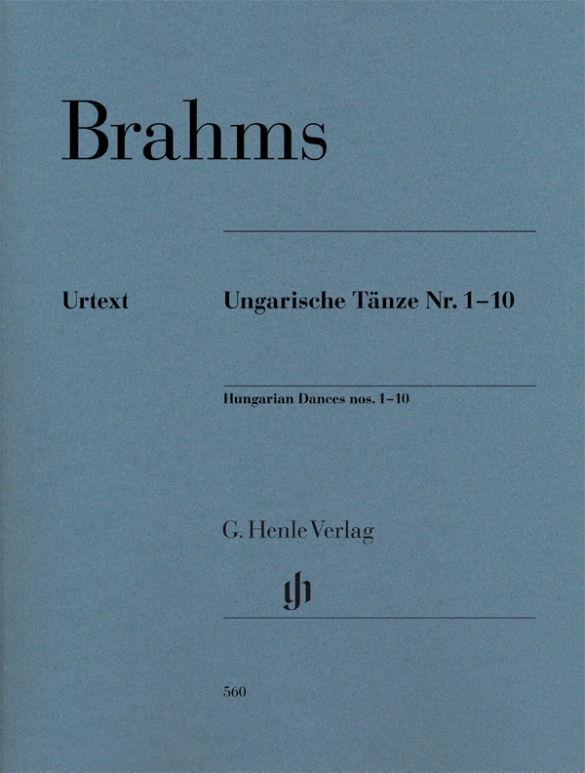PLEASE SELECT THE DESTINATION COUNTRY AND LANGUAGE :
SHIPPING TO : 가나(GHANA)
SHIPPING TO : 가봉(GABON)
SHIPPING TO : 가이아나(GUYANA)
SHIPPING TO : 감비아(GAMBIA)
SHIPPING TO : 과테말라(GUATEMALA)
SHIPPING TO : 그레나다(GRENADA)
SHIPPING TO : 그루지야(GEORGIA)
SHIPPING TO : 그리스(GREECE)
SHIPPING TO : 기니(GUINEA)
SHIPPING TO : 기니비소(GUINEA-BISSAU)
SHIPPING TO : 나미비아(NAMIBIA)
SHIPPING TO : 나이지리아(NIGERIA)
SHIPPING TO : 남아프리카공화국(SOUTH AFRICA)
SHIPPING TO : 네덜란드(네덜란드령앤틸리스)(NETHERLANDS(ANTILLES))
SHIPPING TO : 네덜란드(네델란드)(NETHERLANDS)
SHIPPING TO : 네덜란드(아루바섬)(ARUBA)
SHIPPING TO : 네팔(NEPAL)
SHIPPING TO : 노르웨이(NORWAY)
SHIPPING TO : 뉴질란드(NEW ZEALAND)
SHIPPING TO : 니제르(NIGER)
SHIPPING TO : 니카라과(NICARAGUA)
SHIPPING TO : 대한민국(KOREA (REP OF,))
SHIPPING TO : 덴마크(DENMARK)
SHIPPING TO : 덴마크(그린란드)(GREENLAND)
SHIPPING TO : 덴마크(페로즈제도)(FAROE ISLANDS)
SHIPPING TO : 도미니카공화국(DOMINICAN REPUBLIC)
SHIPPING TO : 도미니카연방(DOMINICA)
SHIPPING TO : 독일(GERMANY)
SHIPPING TO : 동티모르(TIMOR-LESTE)
SHIPPING TO : 라오스(LAO PEOPLE'S DEM REP)
SHIPPING TO : 라이베리아(LIBERIA)
SHIPPING TO : 라트비아(LATVIA)
SHIPPING TO : 러시아(RUSSIAN FEDERATION)
SHIPPING TO : 레바논(LEBANON)
SHIPPING TO : 레소토(LESOTHO)
SHIPPING TO : 루마니아(ROMANIA)
SHIPPING TO : 룩셈부르크(LUXEMBOURG)
SHIPPING TO : 르완다(RWANDA)
SHIPPING TO : 리비아(LIBYAN ARAB JAMAHIRIYA)
SHIPPING TO : 리첸쉬테인(LIECHTENSTEIN)
SHIPPING TO : 리투아니아(LITHUANIA)
SHIPPING TO : 마다가스카르(MADAGASCAR)
SHIPPING TO : 마케도니아(MACEDONIA)
SHIPPING TO : 말라위(MALAWI)
SHIPPING TO : 말레이지아(MALAYSIA)
SHIPPING TO : 말리(MALI)
SHIPPING TO : 멕시코(MEXICO)
SHIPPING TO : 모나코(MONACO)
SHIPPING TO : 모로코(MOROCCO)
SHIPPING TO : 모리셔스(MAURITIUS)
SHIPPING TO : 모리타니(MAURITANIA)
SHIPPING TO : 모잠비크(MOZAMBIQUE)
SHIPPING TO : 몬테네그로(MONTENEGRO)
SHIPPING TO : 몰도바(MOLDOVA, REPUBLIC OF)
SHIPPING TO : 몰디브(MALDIVES)
SHIPPING TO : 몰타(MALTA)
SHIPPING TO : 몽고(MONGOLIA)
SHIPPING TO : 미국(U.S.A)
SHIPPING TO : 미국(괌)(GUAM)
SHIPPING TO : 미국(마아샬제도)(MARSHALL ISLANDS)
SHIPPING TO : 미국(버진제도)(VIRGIN ISLANDS U.S.)
SHIPPING TO : 미국(사모아, 구 서사모아)(SAMOA)
SHIPPING TO : 미국(사모아제도)(AMERICAN SAMOA)
SHIPPING TO : 미국(사이판)(NORTHERN MARIANA ISLANDS)
SHIPPING TO : 미국(팔라우섬)(PALAU)
SHIPPING TO : 미국(푸에르토리코섬)(PUERTO RICO)
SHIPPING TO : 미얀마(MYANMAR)
SHIPPING TO : 미크로네시아(마이크로네시아)(MICRONESIA)
SHIPPING TO : 바누아투(VANUATU)
SHIPPING TO : 바레인(BAHRAIN)
SHIPPING TO : 바베이도스(BARBADOS)
SHIPPING TO : 바하마(BAHAMAS)
SHIPPING TO : 방글라데시(BANGLADESH)
SHIPPING TO : 베네수엘라(VENEZUELA)
SHIPPING TO : 베넹(BENIN)
SHIPPING TO : 베트남(VIET NAM)
SHIPPING TO : 벨기에(BELGIUM)
SHIPPING TO : 벨라루스(BELARUS)
SHIPPING TO : 벨리세(BELIZE)
SHIPPING TO : 보스니아헤르체코비나(Bosnia and Herzegovina)
SHIPPING TO : 보츠와나(BOTSWANA)
SHIPPING TO : 볼리비아(BOLIVIA)
SHIPPING TO : 부르키나파소(BURKINA FASO)
SHIPPING TO : 부탄(BHUTAN)
SHIPPING TO : 불가리아(BULGARIA(REP))
SHIPPING TO : 브라질(BRAZIL)
SHIPPING TO : 브루네이(나이)(BRUNEI DARUSSALAM)
SHIPPING TO : 브룬디(BURUNDI)
SHIPPING TO : 사우디아라비아(SAUDI ARABIA)
SHIPPING TO : 사이프러스(CYPRUS)
SHIPPING TO : 산마리노(SAN MARINO)
SHIPPING TO : 세네갈(SENEGAL)
SHIPPING TO : 세르비아/코소보(SERBIA/KOSOVO)
SHIPPING TO : 세이셸(SEYCHELLES)
SHIPPING TO : 세인트 루시아(SAINT LUCIA)
SHIPPING TO : 세인트빈센트그레나딘(SAINT VINCENT AND THE GRENADINES)
SHIPPING TO : 세인트키츠네비스(SAINT KITTS AND NEVIS)
SHIPPING TO : 솔로몬아일란드(SOLOMON ISLANDS)
SHIPPING TO : 수리남(SURINAME)
SHIPPING TO : 스리랑카(SRI LANKA)
SHIPPING TO : 스와질랜드(SWAZILAND)
SHIPPING TO : 스웨덴(SWEDEN)
SHIPPING TO : 스위스(SWITZERLAND)
SHIPPING TO : 스페인(에스파니아)(SPAIN)
SHIPPING TO : 슬로바키아(SLOVAKIA)
SHIPPING TO : 슬로베니아(SLOVENIA)
SHIPPING TO : 시에라리온(SIERRA LEONE)
SHIPPING TO : 싱가포르(SINGAPORE)
SHIPPING TO : 아랍에미레이트연합국(UNITED ARAB EMIRATES)
SHIPPING TO : 아르메니아(ARMENIA)
SHIPPING TO : 아르헨티나(ARGENTINA)
SHIPPING TO : 아이슬란드(ICELAND)
SHIPPING TO : 아이티(HAITI)
SHIPPING TO : 아일란드(에이레)(IRELAND)
SHIPPING TO : 아제르바이잔(AZERBAIJAN)
SHIPPING TO : 아프가니스탄(AFGHANISTAN)
SHIPPING TO : 안도라(ANDORRA)
SHIPPING TO : 알바니아(ALBANIA)
SHIPPING TO : 알제리(ALGERIA)
SHIPPING TO : 앙골라(ANGOLA)
SHIPPING TO : 앤티과바부다(ANTIGUA AND BARBUDA)
SHIPPING TO : 에리트리아(ERITREA)
SHIPPING TO : 에스토니아(ESTONIA)
SHIPPING TO : 에콰도르(ECUADOR)
SHIPPING TO : 엘살바도르(EL SALVADOR)
SHIPPING TO : 영국(UNITED KINGDOM)
SHIPPING TO : 영국(몽세라)(MONTSERRAT)
SHIPPING TO : 영국(버뮤다섬)(BERMUDA)
SHIPPING TO : 영국(버진제도)(VIRGIN ISLANDS BRITISH)
SHIPPING TO : 영국(안귈라섬)(ANGUILLA)
SHIPPING TO : 영국(지브롤터)(GIBRALTAR)
SHIPPING TO : 영국(케이만제도)(CAYMAN ISLANDS)
SHIPPING TO : 영국(터크스케이코스제도)(TURKS AND CAICOS ISLANDS)
SHIPPING TO : 예멘(YEMEN)
SHIPPING TO : 오만(OMAN)
SHIPPING TO : 오스트레일리아(노퍽섬)(NORFOLK ISLAND)
SHIPPING TO : 오스트레일리아(호주)(AUSTRALIA)
SHIPPING TO : 오스트리아(AUSTRIA)
SHIPPING TO : 온두라스(HONDURAS)
SHIPPING TO : 요르단(JORDAN)
SHIPPING TO : 우간다(UGANDA)
SHIPPING TO : 우루과이(URUGUAY)
SHIPPING TO : 우즈베크(UZBEKISTAN)
SHIPPING TO : 우크라이나(UKRAINE)
SHIPPING TO : 이디오피아(ETHIOPIA)
SHIPPING TO : 이라크(IRAQ)
SHIPPING TO : 이란(IRAN(ISLAMIC REP))
SHIPPING TO : 이스라엘(ISRAEL)
SHIPPING TO : 이집트(EGYPT)
SHIPPING TO : 이탈리아(이태리)(ITALY)
SHIPPING TO : 인도(INDIA)
SHIPPING TO : 인도네시아(INDONESIA)
SHIPPING TO : 일본(JAPAN)
SHIPPING TO : 자메이카(JAMAICA)
SHIPPING TO : 잠비아(ZAMBIA)
SHIPPING TO : 중국(CHINA(PEOPLE'S REP))
SHIPPING TO : 중국(마카오)(MACAU)
SHIPPING TO : 중국(홍콩)(HONG KONG)
SHIPPING TO : 중앙 아프리카(CENTRAL AFRICAN REPUBLIC)
SHIPPING TO : 지부티(DJIBOUTI)
SHIPPING TO : 짐바브웨(ZIMBABWE)
SHIPPING TO : 차드(CHAD)
SHIPPING TO : 체코(CZECH REP)
SHIPPING TO : 칠레(CHILE)
SHIPPING TO : 카메룬(CAMEROON)
SHIPPING TO : 카보베르데(CAPE VERDE)
SHIPPING TO : 카자흐(KAZAKHSTAN)
SHIPPING TO : 카타르(QATAR)
SHIPPING TO : 캄보디아(CAMBODIA)
SHIPPING TO : 캐나다(CANADA)
SHIPPING TO : 케냐(KENYA)
SHIPPING TO : 코스타리카(COSTA RICA)
SHIPPING TO : 코트디봐르(COTE D IVOIRE)
SHIPPING TO : 콜롬비아(COLOMBIA)
SHIPPING TO : 콩고(CONGO)
SHIPPING TO : 쿠바(CUBA)
SHIPPING TO : 쿠웨이트(KUWAIT)
SHIPPING TO : 크로아티아(CROATIA)
SHIPPING TO : 키르키즈스탄(KYRGYZSTAN)
SHIPPING TO : 키리바티(KIRIBATI)
SHIPPING TO : 타이(태국)(THAILAND)
SHIPPING TO : 타이완(대만)(TAIWAN)
SHIPPING TO : 타지키스탄(TAJIKISTAN)
SHIPPING TO : 탄자니아(TANZANIA(UNITED REP))
SHIPPING TO : 터키(TURKEY)
SHIPPING TO : 토고(TOGO)
SHIPPING TO : 통가(TONGA)
SHIPPING TO : 투르크메니스탄(TURKMENISTAN)
SHIPPING TO : 투발루(TUVALU)
SHIPPING TO : 튀니지(TUNISIA)
SHIPPING TO : 트리니다드토바고(TRINIDAD AND TOBAGO)
SHIPPING TO : 파나마(PANAMA(REP))
SHIPPING TO : 파라과이(PARAGUAY)
SHIPPING TO : 파키스탄(PAKISTAN)
SHIPPING TO : 파푸아뉴기니(PAPUA NEW GUINEA)
SHIPPING TO : 페루(PERU)
SHIPPING TO : 포르투갈(PORTUGAL)
SHIPPING TO : 폴란드(POLAND(REP))
SHIPPING TO : 프랑스(FRANCE)
SHIPPING TO : 프랑스(과데루프섬)(GUADELOUPE)
SHIPPING TO : 프랑스(기아나)(FRENCH GUIANA)
SHIPPING TO : 프랑스(뉴칼레도니아섬)(NEW CALEDONIA)
SHIPPING TO : 프랑스(레위니옹섬)(REUNION)
SHIPPING TO : 프랑스(마르티니크섬)(MARTINIQUE)
SHIPPING TO : 프랑스(폴리네시아)(FRENCH POLYNESIA)
SHIPPING TO : 피지(FIJI)
SHIPPING TO : 필란드(FINLAND)
SHIPPING TO : 필리핀(PHILIPPINES)
SHIPPING TO : 헝가리(HUNGARY(REP))
LANGUAGE : 한국어
LANGUAGE : English
LANGUAGE : 中文
LANGUAGE : 日本語









![[리퍼할인] 브람스 헝가리 무곡 No. 1-10 피아노 솔로 HN55](https://cafe24img.poxo.com/accmusicstore/web/product/small/20200121/6c2ddbcdda3bf7d921cd5d83705e3c52.jpg)


